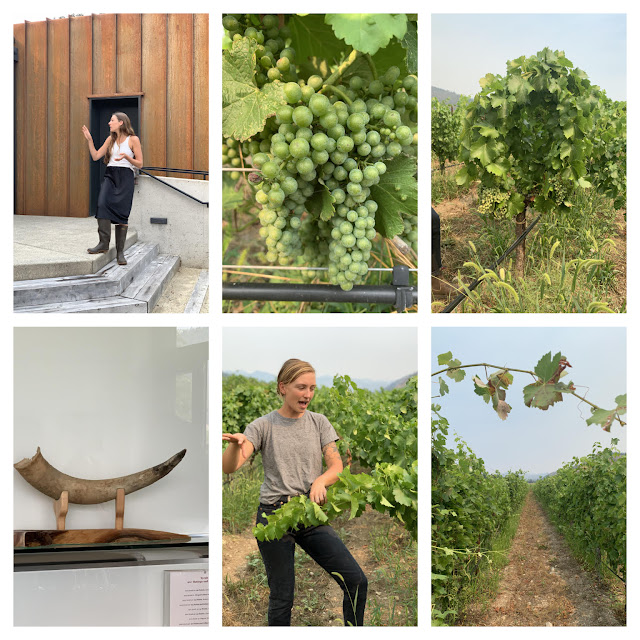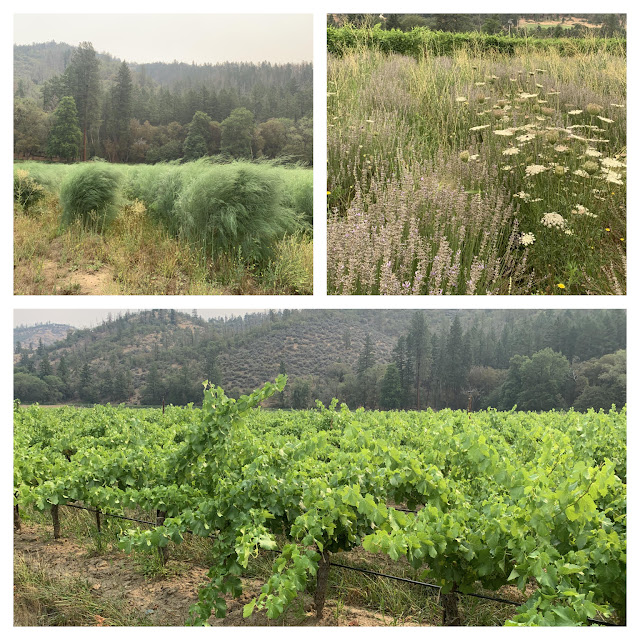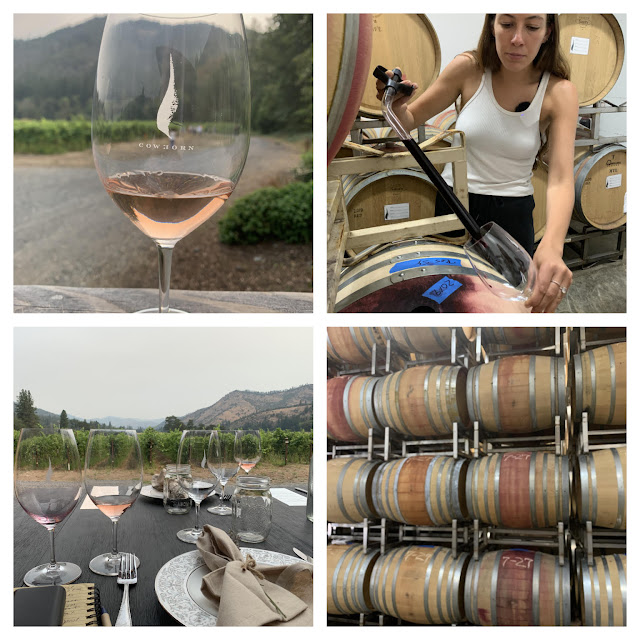This year’s in-person Wine Media Conference finally landed us attendees in Southern Oregon. Postponed for a year due to COVID, the annual event never fails to impress and amaze, giving us the opportunity to dive deep into a wine region … usually one that I’ve never been to. Southern Oregon gets overshadowed by the northern Willamette Valley, known primarily for its Pinot Noirs. My Oregon Pinot Camp experience in the summer of 2018 opened my eyes to these beautiful wines, as well as the Willamette’s Rieslings, Chardonnays, Pinot Gris.
But Southern Oregon is a different place. Sitting between two mountain ranges, the Cascades to the east and the Coastal Range to the west, it encompasses the Rogue, Applegate, and Umpqua valleys, extending from the northern California border up to the beautiful city of Eugene, which lies in Lane County and sits in the southern tip of the Willamette Valley.
The wines of Southern Oregon are a world of different grapes from the Northern Willamette. You’ll find Rhone varieties, Spanish varieties, Italian varieties and many more. In fact, the South cannot be summed up with one grape the way its northern counterpart can. At #wmc21 we were treated to Tempranillos, Mourvedres, Viogniers, Gewurtztraminers, Marsannes, Roussannes, Syrahs, Carmeneres, Chardonnays, Sauvignon Blancs, Pinot Blancs (one of my favorites!), Grenaches, and more. Additionally, there is an enthusiastic embrace among the wineries of biodynamic, regenerative, and organic agriculture, as well as natural winemaking. Yes, orange wines are plentiful here!
Cowhorn Vineyard & Gardens
 |
| Owner Katherine “Mini” Banks (upper left) and winemaker Sarah Thompson (bottom middle). The “little homes” for Grenache are seen in the photo on upper right. |
One of the highlights of the trip was a visit to Cowhorn Vineyard & Garden. This Biodynamic and Organic property changed ownership in April 2021, and is now owned and operated by Katherine “Mini” Banks, who put together a team of of young, energetic, forward-thinking vineyard workers. The team’s enthusiastic and warm embrace of our group of wine writers was much appreciated.
Our day started with one of the most in-depth tours of a vineyard property I’ve had, led by Banks and winemaker Sarah Thompson. We learned about the the #500 (horn manure) and #501 (horn silica) preparations for biodynamic farming, which Banks says are the most critical for creating, maintaining, and enriching the soils in a vineyard. The #500 spray is a “tea” preparation created from the rich hummus made over the winter months in the horns of cows buried in the ground, containing nutrient-rich cow dung. This tea is spread on the vineyard soils in the spring during bud-break. The #501 spray is a silica solution made from ground up quartz and water. It’s sprayed onto the vines, giving them a light-reflective coating, which helps with photosynthesis and disease prevention, among other good things.
In the vineyard, we saw “happy” vines (see photo below), or “Dr. Seuss vines,” as Banks describes them. This is due to the head training favored by the vineyard, which they believe makes the vines self-sufficient as their roots need to go deeper to “ground” themselves. Thompson and team use natural sissal twine to help stabilize the vines when winds come in, which occurs daily late in the afternoon in Applegate Valley. These winds are brought in on a natural funnel off the ocean, which is about a four-hour drive away. These winds were especially helpful this summer to help blow out the fire smoke that was invading all of Southern Oregon in August, due to the horrific wildfires to the east of Cowhorn.
Of particular interest was the “little homes” vine management project that Thompson and Banks are testing, whereby the stray vines are tucked into the main part of the plant (see image above), which they believe signals to the plants that they have enough sunlight. They will see over time if this creates more or less sunburn on the vines and how the vines will react to this system in a rainy year. I hope to revisit this issue in a couple years.
One of Cowhorn’s goals is to become completely dry-farmed. They currently irrigate, and have sprinklers in the vineyards for frost mitigation. Their watering is done at long intervals, as they want the grapes to be “stressed” to be healthier.
The vineyard also features an asparagus field, which in April through June produces about 1,000 pounds per week. The asparagus ferns are harvested after growing season and re-seeded for the following year’s crop. Additionally, lavender fields attract a variety of pollinator bees, and blackberry bushes and oak trees (brought back to life since new ownership took over) round out the polyculture estate that Cowhorn is creating to reach their biodynamic, self-sustainable goals. The future goals, in order to make the property into a closed loop, is to house employees on the property and have the farm animals reside there as well. Currently the cow manure is brought in from Rogue Creamery an organic creamery nearby that produces Rogue River Blue, which was named World Champion Cheese at the 2019/2010 World Cheese Awards in Bergamo, Italy, a first for an American cheese. This was probably the best cheese I’ve ever eaten.
Cowhorn currently has 117 acres of vineyard area, not all of which is planted, with 90% planted to Syrah, and the remaining parcels planted to Viognier, Marsanne, Roussanne, Grenache, Mourvedre, and Tempranillo.
 |
| Asparagus ferns sway in the wind (top left); lavender fields attract pollinating bees (top right), and happy Grenache vines reach for the sky (bottom). |
The Wines … and Lunch
 |
| (clockwise from top left): Cowhorn’s 2020 Grenache Rose; Mini Banks doles out barrel samples of the 2019 Syrah; lunch overlooking the vineyard; the barrel room. |
